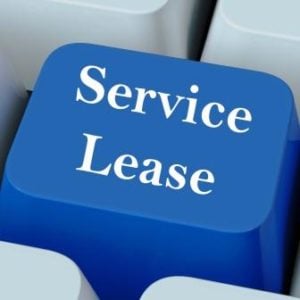An operating lease is a type of lease in which the lessor purchases the asset and leases it to the lessee for a limited and small period of time. Unlike a finance lease, the lessor provides certain other related services along with leased assets, thereby also known as a service lease. The ownership and risks of the asset are retained by the lessor and are not dependent on one lessee for the entire cost of the asset.
An operating lease is very different from a regular finance lease. It is more prevalent among small assets like computers, office equipment, automobiles, trucks, telephones, etc. The period of lease varies from hours, days, or years but usually does not exceed the asset’s life.
The asset under the operating lease goes under the hands of different users over its life. The lessor leases the asset and provides required services along with it. Let’s take the example of computers; the lessor would need to set up the computers and also offer maintenance services.

Typically, an operating lease is preferred by the lessee or the user when the asset is not used in daily life. For example, a projector in a business may be used once in a while when some special training is provided to the employees. If the projector is used once or twice in the whole year, it does not make sense for the user to purchase it when it is available for rent. It will be cheaper compared to buying it.
Features of an Operating Lease
Ownership
In an operating lease, ownership is not transferred to the lessee at any time. It may be transferred to the place of the lessee for use, but ownership remains with the lessor.
Term of Lease
The term of an operating lease is minimal compared to a financial lease. It never extends up to the life of an asset.
Lease Rentals
Lease rental is decided in advance between the lessor and lessee. In the lease rental, the lessor covers the part of his investment made, interest thereon, maintenance, profit, and service cost.
Asset
The asset is selected, purchased, and owned by the lessor. The lessee is interested in the asset only till the time it is on lease to him. His interest is restricted to using the assets until he needs them.
Tax Benefit
There are no significant tax benefits in an operating lease compared to a finance lease. The lessor claims the depreciation, and on the other hand, the income of lease rental is booked as income to the lessor.
Also Read: Types of Lease
No. of Lessee
The lessor in an operating lease does not depend on one single lessee for recovery of the asset’s cost. Many lessees use it over the period of the asset’s life.
Conclusion
When an asset is utilized once in a while and buying that asset is not economically viable for just that little usage, an operating lease is the best option available to the user or lessee. All the risk and reward due to owning the asset lies with the lessor.


Good post. I learn one thing more challenging on different blogs everyday. It’s going to all the time be stimulating to learn content material from other writers and apply a bit of something from their store. Thanks for sharing.